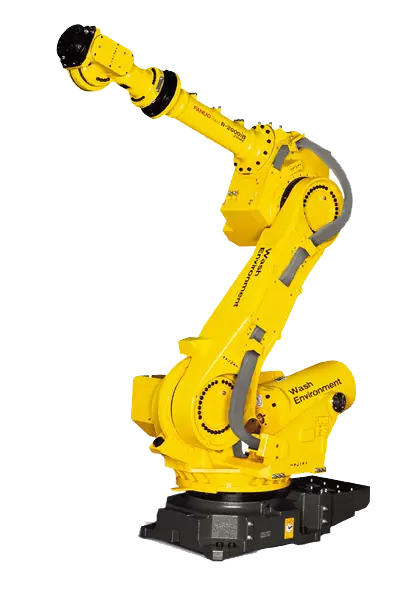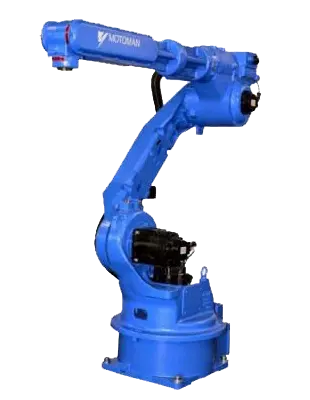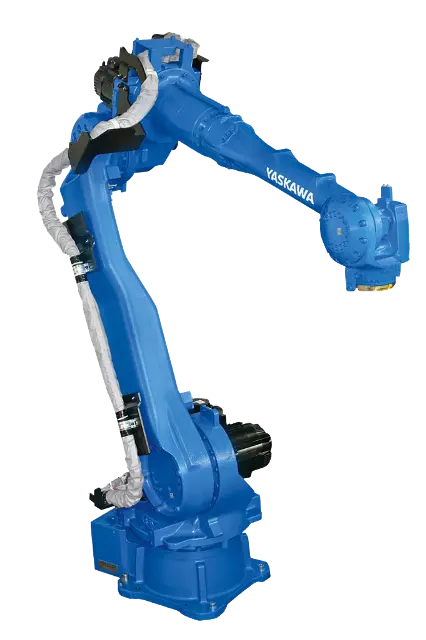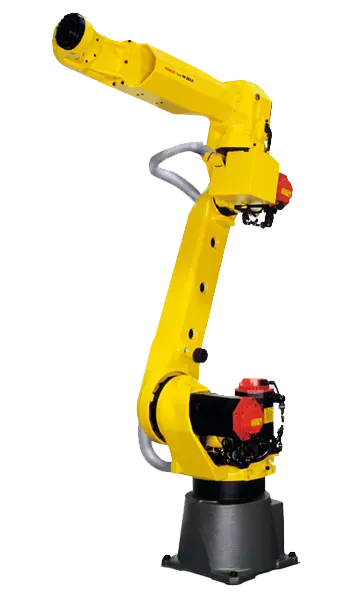Robotic Waterjet Cutting vs Robotic Oxyfuel Cutting
Waterjet cutting and oxyfuel cutting are two material removal applications that can be automated with industrial robots. However, their ability to be automated with robots is the only characteristic these methods have in common. Below is a breakdown of the key differences between these robotic cutting applications.
Process
Robotic waterjet cutting involves integrating an industrial robot with a waterjet cutting end-effector. A high-pressure pump forces a powerful jet of water from the robot’s EOAT to cut and separate workpieces. The FANUC M20ia and the ABB 2400-16 are both ideal for automating waterjet cutting processes.Oxyfuel cutting is one of the oldest cutting methods. It is also referred to as flame cutting. Automating oxyfuel cutting involves integrating an industrial robot with a torch, fuel tank, and oxygen tank. The articulated robot will apply the torch to the workpiece, in which the fuel flame will heat the workpiece surface. As the workpiece heats, slag is formed that the six axis robot will then apply a jet of oxygen to push away the slag and create a cut. Welding robots can be used for oxyfuel cutting, the FANUC Arcmate 120ic and the Motoman HP20 are two examples of such robots.
Materials
Waterjet cutting robots have the advantage of being able to cut through a variety of materials. There is not a material that is off limits for waterjet robots, allowing for greater manufacturing flexibility. These robots can cut through materials up to twelve inches thick and cut through metals up to six inches thick.Oxyfuel cutting robots are at a disadvantage when it comes to workpiece materials as they can only be used to cut metals. They are also limited to the types of metals too, mainly being used for cutting low alloy steels, carbon steels, and cast iron.
Quality
Robotic waterjet cutting lacks the use of heat and is considered a cold process. This means there is no heat affected zone, preventing part distortion that can occur with thermal heating. Cuts turnout clean, smooth, and consistent. Robotic waterjet cutting is also extremely accurate making it ideal for cutting tight tolerances required for detailed workpieces. Waterjet cutting robots not only produce high-quality cuts but are also considered to be environmentally friendly since they use water and do not created fumes, dust, or debris.With robotic oxyfuel cutting there is a heat affected zone and with that are risks of workpieces becoming distorted from the thermal method. Metal in the heat affected zone may become brittle or cracked without post heating treatment. In addition, edges tend to be rough after cutting and will need to undergo additional finishing, unlike with waterjet robots.
Speed
Overall robotic waterjet cutting is a faster process than robotic oxyfuel cutting. Waterjet cutting robots are able to cut through workpieces at faster rates since there is no part heating required. The FANUC M-10ia cuts turn out smooth and clean, preventing the need to take additional time for any finishing.Cycle times may be slower with robotic oxyfuel cutting since metals need to be heated before cutting can begin. The additional steps needed to smooth cut edges and treat the heat affected zone will cause longer cycle times than with waterjet robots. However, when it comes to cutting thicker metals, oxyfuel robots are the most cost-effective.
Robots Done Right is the place to start when it comes to used robots. Contact us if you are interested in buying or selling your used robot.




